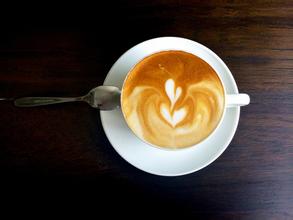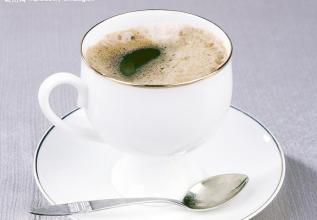Introduction to the flavor of boutique coffee beans in Burundian coffee manor with rich flavor
Coffee tastes different, so you can't drink three or four cups in a row like tea or cola, and the amount of formal coffee cup is the most appropriate. Ordinary drink coffee to 80-100cc for the right amount, sometimes if you want to drink three or four cups in a row, then you have to dilute the concentration of coffee, or add a lot of milk, but still have to consider the physiological needs of the degree, to increase or decrease the concentration of coffee, that is, do not cause greasy or disgusting feeling, and in the sugar allocation may also wish to change more, make coffee more delicious. Drinking coffee hot is essential for a good taste, even on a hot summer day. Coffee in Burundi was introduced by Belgian colonists in 1930 and is now grown only on small farms. Unfortunately, many of these farms are located on the border with war-torn Rwanda, putting pressure on coffee production. Coffee produced in Burundi is almost exclusively Arabica beans, while coffee trees in Ngozi are grown at more than 1200 meters above sea level. Coffee in Burundi is aromatic, has excellent acidity, and is mostly exported to the United States, Germany, Finland, and Japan. Coffee and tea exports are the only economic pillar of the whole country, so in 2013, Ben and his wife Kristy started this Long Miles Coffee Project (LMCP), hoping to change the quality of local coffee and people's lives. In 2015, their coffee won 3rd and 8th place in the Burundi Cup of Excellence (COE), and roasters around the world affirmed the potential of Burundi.
Recently in Shanghai, Ben told us his story and showed us a passionate performance of traditional Burundi drumming.
E324.tm.png
↑
Ben's traditional Burundi drum performed for everyone at the cup test in Shanghai.
Image from: LMCP
coffee
"Burundi is a country that is quite interesting to us. Coffee producers and processors can't price their coffee any more than people can't identify uncut jade, so people here don't have the income to do the growing and processing methods that are being used in other countries, like Panama." Tim Maestas of Augies Coffee (USA) said this.
A8B6.tm.png
↑
Burundi's intensely colored soil.
Image from: LMCP
1 processing
Coffee in Burundi was originally brought in by the Germans in the 1900s; they found that bourbon was the best coffee variety to grow in the local climate, which is usually a "tropical" plateau climate with very large temperature differences between day and night. However, due to the suspension of investment in coffee research, Bourbon became the only coffee variety left in the country and has been treated with "full washing".
The development of fine coffee needs continuous breakthrough and innovation. In 2014, the Long Miles Coffee Project (LMCP) began using sun treatment and honey treatment on their coffee, which made professional coffee cup testers happy with the taste of coffee. According to Miss Gu Qinru, head of Latorre & Dutch Coffee Asia,"Usually we can drink citrus and plum flavors in washed Burundi coffee. And this is the first time we've ever had a cup of sun-cured and honey-treated Burundi coffee. Its flavors become more complex with strawberries, grapes and tropical fruits. It seems that processing is crucial to the taste of coffee."
3D10.tm.png
↑
The selection and treatment of coffee fruits have great influence on the quality of green beans. The picture shows the Bukeye treatment plant in Long Miles.
Image from: LMCP
2 traceability of
Traceability is a common problem faced by coffee growers, green bean buyers and coffee roasters. There are currently about 3500 families working for LMCP. The production picking areas are distributed over eight different hilltops and two treatment sites-Bukeye (operational since 2013) and Heza (operational since 2014). Many variables affect the quality of the final green beans. For example, each hill has a different microclimate, which in turn affects the growth, picking and handling of coffee fruits, and varies from day to day. Nathan James Johnston, owner of Cartel Coffee Roasters in Australia, said: "Working with Long Miles means a lot to us because we know exactly where the coffee is, when and by whom."

Important Notice :
前街咖啡 FrontStreet Coffee has moved to new addredd:
FrontStreet Coffee Address: 315,Donghua East Road,GuangZhou
Tel:020 38364473
- Prev

Introduction to the flavor and taste characteristics of Puerto Rico coffee manor with its unique taste
In fact, any kind of coffee will be given a unique flavor because of its origin, just like different music styles will always give you different feelings. Puerto Rico Yaoke coffee has the characteristics of boutique coffee, its acidity is very stable, full of particles, complete flavor, rich aroma. The reason why Yaocote chose coffee beans better than other producing areas on the island is that they are grown at high elevations.
- Next

Introduction to the flavor and taste characteristics of Uganda coffee manor with extremely light fragrance
At that time, Java coffee sold to Europe was a very special kind of coffee. At that time, it was shipped to Europe and the United States by sailboat, and the distance was long and the speed was slow, so it took a lot of time to transport. In this case, the coffee seems to have undergone a special fermentation and has a very unique taste. Later, when the ship replaced the sailboat, people drank because the transportation time was shortened.
Related
- Detailed explanation of Jadeite planting Land in Panamanian Jadeite Manor introduction to the grading system of Jadeite competitive bidding, Red bid, Green bid and Rose Summer
- Story of Coffee planting in Brenka region of Costa Rica Stonehenge Manor anaerobic heavy honey treatment of flavor mouth
- What's on the barrel of Blue Mountain Coffee beans?
- Can American coffee also pull flowers? How to use hot American style to pull out a good-looking pattern?
- Can you make a cold extract with coffee beans? What is the right proportion for cold-extracted coffee formula?
- Indonesian PWN Gold Mandrine Coffee Origin Features Flavor How to Chong? Mandolin coffee is American.
- A brief introduction to the flavor characteristics of Brazilian yellow bourbon coffee beans
- What is the effect of different water quality on the flavor of cold-extracted coffee? What kind of water is best for brewing coffee?
- Why do you think of Rose Summer whenever you mention Panamanian coffee?
- Introduction to the characteristics of authentic blue mountain coffee bean producing areas? What is the CIB Coffee Authority in Jamaica?

